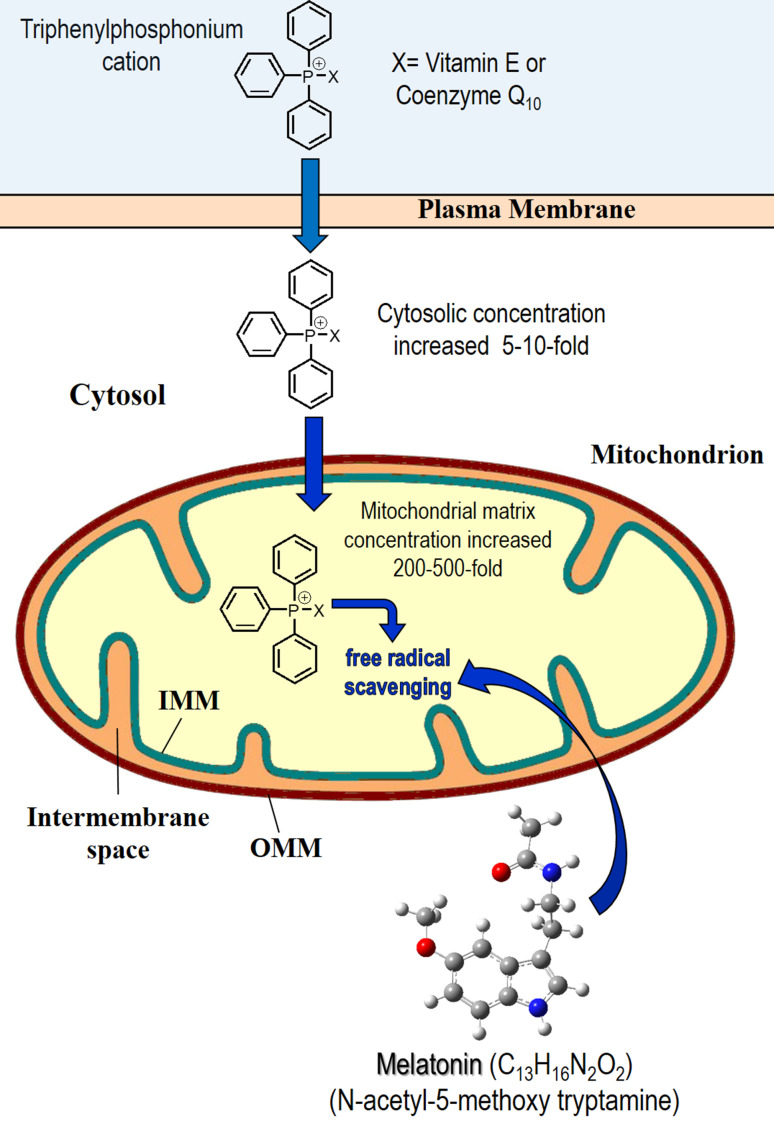Fig. 9.
The structure of synthetically produced, mitochondria-targeted antioxidants, i.e., MitoE and MitoQ. When vitamin E or co-enzyme Q10 is coupled to the triphosphonium cation, they more readily accumulate in the cytosol and in the mitochondria due to their increased lipid solubility. With regard to mitochondria, these synthetically produced antioxidants accumulate in concentrations of 200-–500-fold greater than unconjugated vitamin E and co-enzyme Q10. Despite this high concentration, when compared under in vivo experimental conditions, melatonin at equimolar concentrations was as good as or better than the fabricated antioxidants in protecting against cellular oxidative stress. For this and other reasons, we consider melatonin to be a mitochondria-targeted antioxidant. IMM inner mitochondrial membrane, OMM outer mitochondrial membrane

